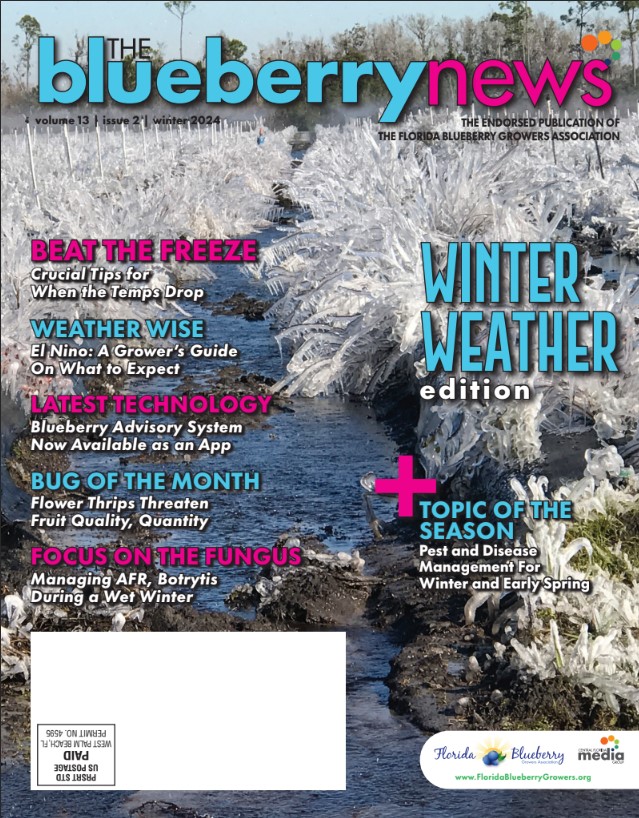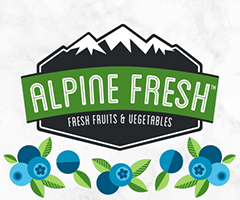Woodlands May Host Chilli Thrips in Off-Season
Chilli thrips, Scirtothrips dorsalis Hood (Thysanoptera: Thripidae) has emerged as an invasive insect pest of specialty crops in Florida, including in strawberry, blueberry, citrus, peppers, and ornamentals. Something to note here is that these insects are commonly called thrips (singular and plural), and the term “thrip” is an incorrect reference to this group of insects. Based on recent field studies, strawberry plants had more than seven times the fruit yield when treated with an insecticide, spinetoram, compared to untreated fields severely infested with chilli thrips. Infested strawberry fruits appear bronzed and cracked and are considered unmarketable. This pest, native to Southeast Asia, migrates into the crop fields from surrounding areas, but little is known about its whereabouts during the off-season. It was assumed that S. dorsalis may have been spending their summer months on other crop hosts, since this is a polyphagous pest (feeding on various types of plants). This information is crucial since increasing the understanding of the non-crop habitats can assist with the management of this severely damaging agricultural pest.
Some strawberry growers suggested that S. dorsalis may be entering the strawberry crop from the surrounding trees in the woodland areas adjacent to their fields. There is an advantage of woodlands since those natural areas serve as a buffer between crops where a susceptible S. dorsalis population can survive due to lack of pesticide use. This population is crucial to avoid the development of insecticide resistance in S. dorsalis. Insecticide resistance can be inherited by thrips offspring, and subsequent generations can become very difficult to manage by using insecticides if all resistant populations continue reproducing. However, if a resistant thrips adult mates with a susceptible thrips adult, the insecticide resistance status of the offspring can be manageable. This is crucial as S. dorsalis is a rapidly reproducing pest, capable of completing their entire life cycle within 12 days at 28℃ and 10 days at 32℃. Another advantage of having a susceptible population of S. dorsalis in woodlands is the possibility of natural enemies such as predatory insects and mites or entomopathogens (i.e., naturally occurring fungus, bacteria, viruses, and nematodes that can infect insect pests and help manage crop growth) to access and utilize this new food source.
Typically, invasive insects become pests because of a lack of natural controls since they do not have predators in the invasive range. With time, the natural enemies in the invasive range may or may not learn to feed on the new insect species, unlike in crop fields, where natural enemies suffer high rates of mortality due to pesticide use.
Given that there are advantages of S. dorsalis maintaining a field population in natural areas, more information is needed about possible host plants. Since there is a diversity of trees, shrubs, and herbs in the woodlands adjacent to most crop fields in the S. dorsalis invasive range, a survey was initiated by UF/IFAS GCREC Strawberry and Small Fruit Crops entomologist, Sriyanka Lahiri, and her Biological Scientist, Chastity Perry, to start assessing reproductive host plants present in these woodlands.
Three commercial strawberry fields with ongoing S. dorsalis issues and proximity to blueberry orchards and woodland areas were selected for this survey in the summer of 2023. A collaboration with growers enabled the selection of these fields which included two conventional fields and one organic certified field in Hillsborough County. Since S. dorsalis is a foliage feeder in addition to feeding on fruits, their preference for young foliage was utilized to sample wild plants in these natural areas. Once a month, leaves were collected at each field site from 12 plant species in total that commonly occur in these areas. Presence of adult and immature S. dorsalis individuals throughout the sampling period was used as the determinant of a plant species to be a reproductive host. Field sites were sampled from June to October 2023 to track the S. dorsalis populations, in this manner.
The Lahiri lab found both adult and larval stages of S. dorsalis on weedy plants such as wild muscadine grape (Vitis rotundifolia Michx.), Spanish needles (Bidens alba (L.) DC.), and ragweed (Ambrosia artemisiifolia L.), as well as tree species Laurel oak (Quercus laurifolia L.), Carolina Laurel Cherry (Prunus caroliniana Aiton), camphor (Cinnamomum camphora (L.) J. Presl), water oak (Quercus nigra L.), sugarberry (Celtis laevigata Willdenow), and sweet gum (Liquidambar styraciflua L). The sampling effort is continuing through the current strawberry field season and will extend through the next strawberry season to confirm the observation. This information will enable growers to manage these woodland vegetation areas with biological control agents if needed.
CREDIT:
SRIYANKA LAHIRI, UF/IFAS GCREC Strawberry and Small Fruit Crops entomologist
Fig. 1. Damaged strawberry fruits from chilli thrips feeding.
Fig. 2: Adult and larval chilli thrips feeding along leaf veins.
Fig. 3: Wild muscadine grape vine at field site.
Fig. 4: Ragweed at field site.
Fig. 5: Sweetgum leaves at field site.





